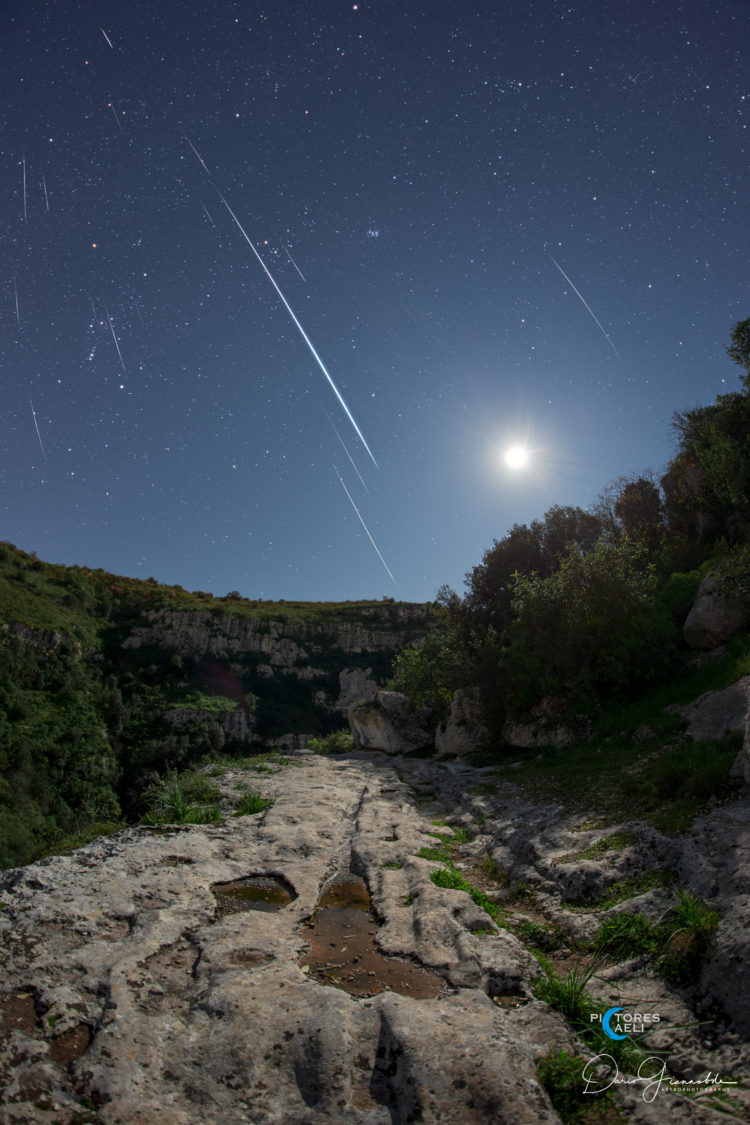Scratches in the Sky of Pantalica
Description
A photo composite of 42 exposures during a few hours. From the photographer: “This year the night of the shooting stars of Santa Lucia, also known as Geminids, did not disappoint. The presence of the Moon has discouraged many enthusiasts due to the very bright sky background related to the illumination of the lunar disk at 76%. The only hours of complete darkness were available only in the late morning. Despite this, I decided to go to the site of Pantalica (UNESCO World Heritage Site) to still try to capture the meteors and maybe take advantage of the night lighting in my favor to highlight some features of the valley. The image was taken on one of the ridges of the Pantalica valley and shows the southern portion of the sky where the moon was passing. In the foreground you can see the rocky path in the past crossed by mules and small wagons that over time have left furrows on the rock. At the bottom, under the moon, you can see one of the walls in which many cave tombs are dug, testimony of an ancient Sicilian culture dating back to the first millennium BC. The sky was crossed by several meteors, some fireballs and a couple of bolids. Of the latter, the brightest has ripped through the sky, rivaling the Moon in brightness. The event was clearly visible and lasted a few seconds and then completed with a fragmentation of the meteor. The path in the sky was wide. For comparison, just look at the constellation of Orion on the left and compare the angular distance traveled by the celestial fragment. The constellation of Orion measures about 17 degrees while the bolide has traveled a distance of about 50 degrees in the sky !!!! at the top you can see the Milky Way while the remaining 16 meteors are arranged in such a way as to highlight the radiant in the constellation of the Gemini from which they seem to fall in perspective.”
Technical details: Canon 6d, samyang 12mm, f/2.8, 25 sec, iso 1000, 17 shots for the meteors, 25 shots for the background

comments (0)